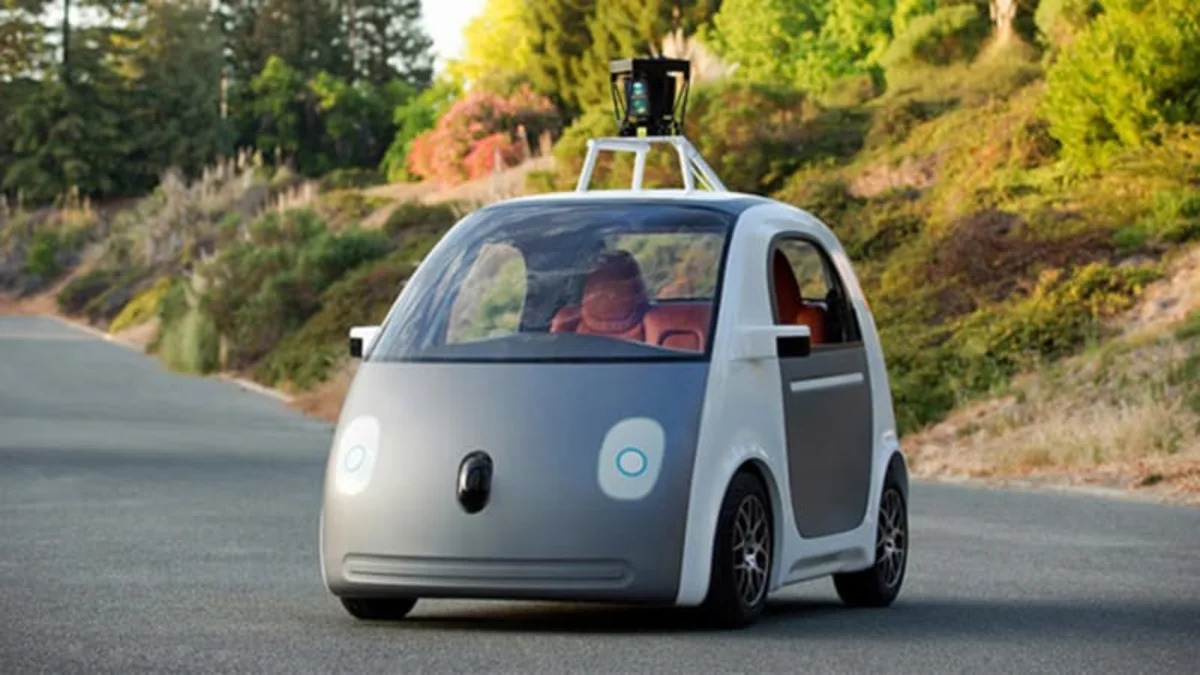Google's self-driving car is being heralded as a massive step forward for automotive technology, but a computer-guided victory lap might be premature.
MIT Technology Review attempted to separate facts from the hype, and found that the Google car still has its share of bugs to work out.
For starters, it currently can not drive down just any street. Engineers must meticulously mapped a route, including driveways, before attempting any journey in the car. The data is examined by man and machine to make it accessible for the autonomous vehicle. Such labor intense mapping would need to be updated on a continuous basis for every road in the country.
And while the self-driving car can now recognize stop signs at construction sites, its defensive driving programs still can't handle four-way intersections very well. Other unplanned stationary obstacles, such as potholes or open manhole covers, don't register at all. Weather is another difficulty. The autonomous car can't drive in snow or heavy rain and it can't see a traffic light with the sun in its camera's eye.
Self-driving cars are also generating new legal issues, moral dilemmas and privacy concerns. A study from the Alliance of Automobile Manufacturers, claimed that nearly three-quarters of participants were worried about driverless cars recording personal information. Adding to that, 70 percent of respondents feared their info being accessed by the government.
Drivers are right to be worried about what their car knows about them and who can access that information. Hackers are already able to access user information in newer cars' advanced computer systems. They can also go a step further and control everything from braking and steering to informational displays.
Programming in self-driving cars will need to make split-second decisions about how and when to crash that could affect the lives of motorists and pedestrians alike. Some have even asked, if we get too good at eliminating car accidents where will our extra organs come from?
Google has been setting itself up for great expectations. The company believes their self-driving car can drastically reduce car accidents, the vast majority of which are caused by driver error, as well as clear up traffic congestion and provide drivers a more peaceful commute. In their excitement, the company built its first generation of autonomous test vehicles without a brake pedal, gas pedal or steering wheel only to have the state of California bring the regulatory hammer down.
The enthusiasm for self-driving cars is understandable, considering the safety benefits, but they hype is a bit premature.
"I think the Google technology is great stuff. But I just don't see a quick pathway to the market," David Alexander, a senior analyst with Navigant Research who specializes in autonomous vehicles, told AOL Autos in March when Google announced they were beginning autonomous vehicle testing on city streets.
His projection is that self-driving cars will not be commercial available until 2025.
MIT Technology Review attempted to separate facts from the hype, and found that the Google car still has its share of bugs to work out.
For starters, it currently can not drive down just any street. Engineers must meticulously mapped a route, including driveways, before attempting any journey in the car. The data is examined by man and machine to make it accessible for the autonomous vehicle. Such labor intense mapping would need to be updated on a continuous basis for every road in the country.
And while the self-driving car can now recognize stop signs at construction sites, its defensive driving programs still can't handle four-way intersections very well. Other unplanned stationary obstacles, such as potholes or open manhole covers, don't register at all. Weather is another difficulty. The autonomous car can't drive in snow or heavy rain and it can't see a traffic light with the sun in its camera's eye.
Self-driving cars are also generating new legal issues, moral dilemmas and privacy concerns. A study from the Alliance of Automobile Manufacturers, claimed that nearly three-quarters of participants were worried about driverless cars recording personal information. Adding to that, 70 percent of respondents feared their info being accessed by the government.
Drivers are right to be worried about what their car knows about them and who can access that information. Hackers are already able to access user information in newer cars' advanced computer systems. They can also go a step further and control everything from braking and steering to informational displays.
Programming in self-driving cars will need to make split-second decisions about how and when to crash that could affect the lives of motorists and pedestrians alike. Some have even asked, if we get too good at eliminating car accidents where will our extra organs come from?
Google has been setting itself up for great expectations. The company believes their self-driving car can drastically reduce car accidents, the vast majority of which are caused by driver error, as well as clear up traffic congestion and provide drivers a more peaceful commute. In their excitement, the company built its first generation of autonomous test vehicles without a brake pedal, gas pedal or steering wheel only to have the state of California bring the regulatory hammer down.
The enthusiasm for self-driving cars is understandable, considering the safety benefits, but they hype is a bit premature.
"I think the Google technology is great stuff. But I just don't see a quick pathway to the market," David Alexander, a senior analyst with Navigant Research who specializes in autonomous vehicles, told AOL Autos in March when Google announced they were beginning autonomous vehicle testing on city streets.
His projection is that self-driving cars will not be commercial available until 2025.







Sign in to post
Please sign in to leave a comment.
Continue